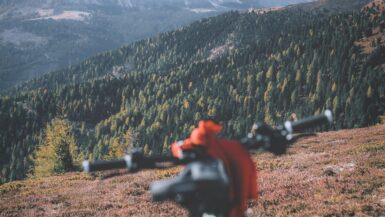Hiking and outdoor activities can be liberating and rewarding experiences. Unfortunately, accidents and injuries can happen, and being prepared with the proper knowledge and skills can make all the difference in providing aid. Learning basic first aid skills is essential for anyone planning to spend time outdoors on trails or other outdoor settings. Knowing the basics of first aid can help you better handle any minor mishaps or even more complex situations that may arise during your outdoor experiences.
Safety Precautions
Before learning basic first aid skills for trails and beyond, ensure you have all the necessary supplies. Gather items such as bandages, antiseptic wipes, gloves, and a first-aid kit. To be well-prepared, add any medications you may need and medical information that may be useful in an emergency.
Be Aware of your Surroundings
One of the most important safety precautions to take when learning basic first aid skills for trails and beyond is being aware of your surroundings. Be sure to note any hazards that could cause an injury, such as sharp rocks or slippery surfaces, and any potential wildlife you may encounter. If you are exploring a new area, make sure that you research the terrain and know your limits before you begin.
Know Your Skill Level
When learning basic first aid skills for trails and beyond, it is essential to know your skill level. Do not attempt to treat a severe injury if you are not adequately trained, and never hesitate to call for professional help if a situation requires it. Do your best to stay up to date with any certifications you may have, and be sure to learn about any new developments in first aid practices.
Practice Proper Hygiene
Another safety precaution to take when learning basic first aid skills for trails and beyond is to practice proper hygiene. Be sure to wear gloves when treating wounds, and avoid contact with bodily fluids to the best of your ability. Doing this will help to minimize the risk of infection and keep everyone involved safe and healthy.
Communicate Early and Often
Finally, communicating early and often is one of the most important safety precautions when learning basic first aid skills for trails and beyond. Make sure that all party members know your plan and understand the risks of the environment they are in. Additionally, always be sure to call for help if the situation is beyond your skill level or if the injury is too severe. Doing this will ensure that the injured person receives the best care possible.
Necessary Supplies
A basic first aid kit is essential for learning how to respond to minor injuries and ailments while on the trail. The kit should contain materials to clean and dress a wound, adhesive bandages in different sizes, sterile gauze and tape, antiseptic wipes, tweezers, medical gloves, and an over-the-counter pain reliever. Including a space blanket, a workable flashlight, and an emergency whistle is also essential.
Knowledge of First Aid
Supplies are insufficient; you must also have basic knowledge of first aid techniques and practices. Learning how to treat common ailments and injuries while on the trail is an important skill. Some resources include attending a first aid training class or taking an online course. Knowing how to respond to joint injuries and ailments such as minor scrapes, cuts, blisters, and sprains is a must-have for any hiker or outdoor enthusiast.
Emergency Contact Information
It is essential to always have emergency contact information on hand. This includes names, addresses, and phone numbers for you and your family and an emergency contact list for the local authorities. Having this information readily available can make a difference in an emergency. Make sure this information is included in your first aid kit.
Extra Supplies
While the basic first aid kit is a must, having a few extra items on hand can significantly increase the chances of responding successfully to an injury or ailment. These items may include a splint, ointments and creams, safety pins, water purification tablets, sunscreen, and insect repellent. It is a good idea to have a small first aid manual in your kit as a reference guide in case of an injury or illness.
Staying Informed
Stay informed of new and updated first-aid techniques for any outdoor enthusiast. Check with local organizations to stay up-to-date on the latest news and trends. Also, periodically check your supplies and replace any missing or expired items.
Learning basic first aid skills is essential for anyone who enjoys spending time outdoors. Having the necessary supplies, knowledge, and contacts on hand can help to ensure the safety of everyone. With some preparation, anyone can confidently go out into the wilderness and enjoy it for all it offers.
Assessing Injuries
Recognizing the severity of an injury and accurately assessing the situation is a critical skill when providing first aid outdoors. Knowing whether an injury requires immediate attention, or can be treated as an outpatient, is vital. The first step is to evaluate the person’s condition. Ask them simple questions and assess their level of consciousness.
Recognizing the Symptoms of Injury
It is crucial to recognize the signs and symptoms of an injury quickly. People who have hurt themselves may become confused, faint, or vomit. If a person has various injuries, they may be in shock and require urgent attention. Pay attention to the affected area, which may be swollen, bruised, and bleeding. Check for broken bones and open wounds. If a bone is broken, the person may be unable to move the affected area.
Taking Action for Injured Person
Once the injury has been assessed, it’s essential to take immediate action. If the damage is life-threatening, call 911 immediately. If the injury is minor and can be treated in the field, such as a strain or sprain, stop the bleeding and use ice to reduce swelling. If possible, have someone else stay with the injured person while you go to seek help.
Preventing Further Injury or Discomfort
The main goal is to prevent further injury or discomfort. Refrain from moving the injured person unless necessary, especially if they have head or neck injuries. Please place them in the recovery position and keep them warm using a coat, blanket, or other friendly material. Monitor the person’s breathing and reassure them until help arrives.
Keeping Injury Treatments Simple and Effective
It is vital to keep treatments as simple and effective as possible. If you’re unsure how to treat an injury, seek help from a qualified medical professional. Do not attempt to move a person if they are in pain or unable to move. If the person has trouble breathing, keep them in a stable position.
Staying Up-to-Date on First Aid Training
Learning basic first aid skills is vital for trail and beyond adventurers, so staying up-to-date on first aid training is essential. It can help in an emergency and provide peace of mind and the confidence to respond to emergencies outdoors.
Treating Cuts, Scrapes, and Sprains
Outdoor activities come with the risk of minor injuries such as cuts, scrapes, and sprains. Knowing the correct first aid treatment for these issues is paramount for trail users who want to prevent minor injuries from turning into significant problems. This article will look at adequately treating cuts, scrapes, and sprains while on the trail.
How To Deal With Cuts and Scrapes
Cuts and scrapes are the most common types of minor injuries on the trails. Cutting and scrapes should be cleaned and dressed immediately to prevent serious infections. First, use soap and clean water to rinse any dirt and debris. Then, disinfect the wound with an antiseptic cleaning solution, such as iodine or hydrogen peroxide. Once the damage is clean, apply a thin layer of antibiotic ointment and cover the area with a sterile gauze bandage. You may need to apply pressure with a clean cloth for deep cuts to slow the bleeding. If the bleeding doesn’t stop after 10 minutes, seek medical attention.
Treating Sprains on the Trail
Sprains are common injuries associated with outdoor activities such as hiking, biking, and skiing. Sprains are caused by an overstretching or tearing of the ligaments. To prevent a mild sprain from worsening, taking the proper steps immediately after an injury is essential. If a sprain is suspected, it’s vital to rest the affected area and apply an ice pack or cold compress to reduce swelling. Compression bandages can also help reduce swelling and should be securely fastened, but ensure they are not too tight as they could further impair circulation. Elevation can also help reduce swelling and discomfort, so position the affected area higher than your heart if possible. Finally, keep the affected area immobilized to prevent further damage. If the pain does not subside after several days, seek medical attention.
Prevention of Injuries on Trails
Although minor cuts, scrapes, and sprains are unavoidable, there are some measures we can take to reduce the likelihood of injury on the trail. Before setting off, practice proper trail etiquette and wear the appropriate protective gear for your activity. Make sure to stay hydrated, alert, and well-rested throughout your trip. Additionally, it is vital to prepare for the unexpected by carrying a first-aid kit with some basic supplies. With the proper knowledge, preparation, and prevention techniques, we can reduce the risk of injury while in the great outdoors.
Dealing with Heat and Cold Stress
Being out on the trail can expose hikers and adventurers to dangerous levels of heat and cold stress. Knowing basic first aid techniques can help identify signs of heat and mean pressure in yourself and your companions and provide appropriate treatment.
Identifying Heat Stress
Heat stress occurs when the body cannot cool itself adequately. Signs of heat stress include excessive sweating, dizziness, fatigue, headaches, and nausea. More severe symptoms such as muscle cramps, confusion, and fainting may develop if left untreated.
Providing First Aid for Heat Stress
If someone shows signs of heat stress, move them to a cooler, shaded area and have them rest and drink plenty of fluid. Remove any excess clothing and have them fan themselves. Please provide them with ice packs and cool, damp clothes to help lower their body temperature. If their symptoms persist, seek medical attention.
Identifying Cold Stress
Cold stress occurs when the body is exposed to freezing temperatures. Signs of cold stress include shivering, numbness, and confusion. More severe symptoms include disorientation, slurred speech, slowed movement, and, in extreme cases, hypothermia.
Providing First Aid for Cold Stress
If someone shows signs of cold stress, move them to a warmer, sheltered area. Remove any wet clothing and replace it with warm, dry clothing. Give them warm drinks and high-calorie snacks such as chocolate and granola bars. If their symptoms persist, seek medical attention.
Knowing the signs of heat and cold stress and basic first aid techniques can help ensure a safe and successful outdoor experience for yourself and your companions.
Preparing for Emergencies
Taking proactive steps to avoid hazardous situations is the primary focus of learning basic first aid skills for trails and beyond. Educating yourself on the potential risks of different environments, proper gear, and situational awareness is essential to prepare yourself for any situation on the trail.
Gathering the Right Supplies for Emergencies
It is essential to ensure that you have the proper supplies for basic first aid in an emergency. A first aid kit should include bandages, antiseptic, tweezers, gauze, scissors, adhesive tape, sting relief pads, and gloves. Additionally, if you are traveling on a hiking trail, it is crucial to carry ample water and nourishment to prevent dehydration and hypothermia. Having the right equipment can help deal with any medical emergency on the trail quickly and effectively.
Prioritizing the Patient
In a medical emergency, the priority is to provide aid to the patient most efficiently and effectively as possible. All first aid treatments should be rendered while prioritizing the safety and well-being of the patient. It is vital to assess the severity of the situation and take the appropriate steps to provide aid. If the problem is more severe and requires additional medical attention, it is vital to seek professional help as soon as possible.
Recovery and Quick Assessment
Once the patient has been stabilized, it is essential to assess the situation for further action. Taking note of the symptoms and providing necessary care is critical to the patient’s recovery. If any follow-up care is required, it is crucial to seek professional help as soon as possible. Additionally, it is essential to take note of any events that occur to avoid similar emergencies in the future.
Continuing Education
Learning basic first aid skills for trails and beyond is an ongoing process. To be prepared in an emergency, educating yourself on the potential risks and first aid treatments is crucial. Additionally, it is essential to stay up-to-date on any recommended gear and protocols related to first aid to ensure patient safety.
Applying First Aid for Insect or Creature Bites
When hiking or camping, it is not uncommon to encounter creatures and insects that may bite or sting. Such bites can be painful and can cause reactions that require medical attention. Knowing how to recognize and treat insect and creature bites is integral to having basic first aid skills while out in the wilderness.
Identifying Different Bites
The first step in treating insect or creature bites is identifying the bite type. Insect bites can be red and can cause swelling and itching. Some insects, like ticks, can be hard to spot, so it’s crucial to search for them on your body and clothing when returning from a hike. Creature bites will usually be much more pronounced, as they tend to be deeper and may even break the skin.
Cleaning & Treating Bites
Once the type of bite is determined, it is essential to clean the affected area. If possible, the bite should be washed with soap and water, or a cleaning solution like hydrogen peroxide or rubbing alcohol should be used. An antiseptic cream can then be applied to the bite to help prevent infection. An ice pack or cold compress can reduce inflammation if the area is swollen and painful.
Medication & Home Remedies
In some instances, taking an antihistamine like Benadryl or using Calamine lotion may be necessary to help relieve itching and swelling. An over-the-counter pain reliever may also help manage discomfort. If the bite is severe, it is always best to seek medical attention. In some cases, however, a home remedy can be beneficial. For example, honey has been known to be effective in reducing inflammation and itching.
Avoiding Future Bites
It is also essential to avoid being bitten or stung in the future. This may include wearing light-colored, long-sleeved clothing that covers most of your skin or using insect repellent. For creature bites, it is essential to keep food away from areas where animals may be attracted and to be aware of your surroundings.
Learning to recognize and treat insect and creature bites is essential to have basic first aid skills for the trial and beyond. If a bite or sting occurs, it is crucial to identify the type of bite, clean and medicate the affected area, and prevent future bites with precautions such as wearing protective clothing and using insect repellent.
Increase Your Confidence with First Aid Knowledge
Learning basic first aid skills is integral to being prepared for any activity outside, particularly on wilderness trails. From using a tourniquet to treat severe bleeding to splinting a fractured bone, having the knowledge and confidence to treat injuries can help prevent further harm or even save a life. Familiarizing yourself with basic first aid is easy and can be done through online courses or reading self-help guides. A wilderness first aid or CPR course can equip you with the knowledge and confidence to apply first aid in an emergency. Taking the time to learn and practice first aid skills also helps reduce some anxiety that may accompany an unforeseen event. With the proper training and knowledge, preparing for an unexpected medical emergency on the trails or beyond is just as important as packing your water and boots.






Leave a reply